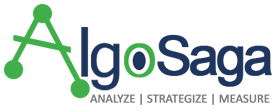Last Updated on May 27, 2025 by Admin
SEO Landing pages are built to encourage users to take a specific action, such as buying a product, signing up for a newsletter, or joining a mailing list. These pages are key to converting visitors into customers or subscribers by effectively communicating a call to action (CTA).
However, SEO landing pages have another goal-to show up high on search engine results page (SERP) for the right keywords.
In this guide, we’ll share straightforward tips for making landing pages easy for users to interact with and optimized to rank well in search results.
What is an SEO landing page?
An SEO landing page is a webpage created to draw in visitors from search results and encourage them to take action, like signing up or buying something. It focuses on specific keywords and what users are looking for.
These pages are a key part of marketing campaigns to increase their visibility online and get more search traffic. Effective SEO landing pages are simple and clear, designed to lead visitors straight to an action without any confusing extras.
SEO landing page best practices
If you want to know how to optimize landing pages, here are best practices for optimizing your SEO landing pages.
1. In-depth keyword research
Keyword research is an essential initial step in developing your SEO landing pages. Begin by pinpointing high traffic keywords that are pertinent to your business and offerings. Try using a keyword research tool like Google Keyword Planner to these type of high traffic keywords and develop content around these keywords, catering to the search intent associated with them.
Incorporate your chosen keywords into your content, but be careful not to overdo it. Search engines can identify when keywords are stuffed into content excessively, which could hurt your ranking.
Instead, consider using related secondary keywords that complement and enhance the context of your SEO landing page and support your main high traffic keyword.
2. Optimize on-page SEO elements
Optimizing landing pages goes beyond just using the right keywords. It’s important to organize your content so that it’s easy for search engine bots to scan, understand, and index. This helps search engines figure out what your page is about, which is essential for proper listing.
This process is known as on-page SEO, and it’s a crucial part of making your landing page work well in search results.
Here’s what to consider when setting up your landing page for SEO:
-
- Title tag: The page title is the first thing users see in search results. Make sure it’s concise, engaging, and includes your main keyword. For best results, start the title with your keyword and place less important words towards the end.
- Headings: Use your main topic keyword in H1 heading. For other content on the page, use H2, H3, and H4 headers to organize it.
- Meta description: It is crucial to draw users to click on your link in search results. Craft a concise and direct meta description that clearly explains what users will discover on your landing page.
Don’t forget to include your target keyword, as Google often highlights these search terms in bold within the description.
-
- Alt text: Add alt text to your images in HTML. It describes images for search engine bots to read, helping them understand your content better. It also helps people with visual impairments understand what the image is about through screen readers. If an image doesn’t load, the alt text will show instead.
- Internal links: Link your landing page from other website pages which point to your landing page, using the main keyword as the anchor text when possible. This helps search engines understand what the landing page is about.
The main purpose of your landing page is to convert visitors into leads or sales.
- Images and videos: Add images and videos to your page. These visual elements signal to search engines that your content is engaging and valuable. They also capture readers’ attention and can keep them on the page longer. When adding these files, name them appropriately, using the primary keyword in the file name, title, and alt text.
3. Build backlinks
Backlinks are links from other websites to yours. High-quality backlinks from reputable and authoritative sites can significantly enhance your landing page SEO.
Additionally, creating high-quality links, shareable content can boost your chances of getting backlinks. Content that typically performs well includes infographics, noteworthy statistics, and videos, which engagingly present valuable information.
You can also generate organic backlinks by sharing your content on social media platforms like LinkedIn or content-sharing platforms like Medium.
4. Optimize page loading speed
Page speed is crucial for SEO, and Google uses it as a ranking factor. Studies show 83% of users expect websites to load in 3 seconds or less.
5. Make each landing page unique
Make each landing page unique. SEO landing pages often belong to broader marketing campaigns where certain keywords overlap. Despite these similarities, it’s crucial to ensure each page must be unique to avoid search engines mistaking them for duplicates.
Conclusion
landing page is useless if your target audience cannot find. Landing page SEO helps your landing pages rank better on search engines, ultimately driving more organic traffic and conversions.
The SEO practices mentioned above will guide you to help optimize your landing pages. Also, for more help, you can consult the experts at AlgoSaga internet marketing company. They can help you identify the landing pages that need optimization and help to increase visitors and conversions.
